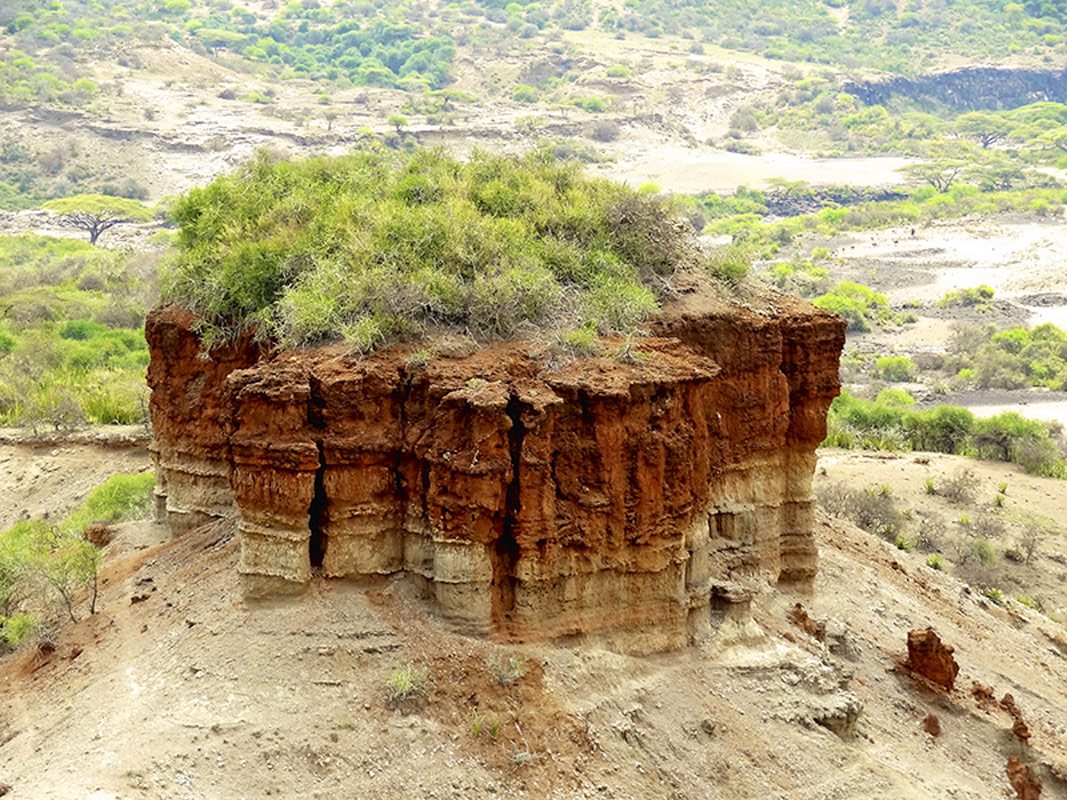OLDVUAI GORGE

Olduvai Gorge is a site in Tanzania that holds the earliest evidence of the existence of human ancestors. Paleoanthropologists have found hundreds of fossilized bones and stone tools in the area dating back millions of years, leading them to conclude that humans evolved in Africa.
Olduvai is a misspelling of Olduvai, a Maasai word for a wild sisal plant that grows in the area. The gorge is in the Great Rift Valley, between the Ngorongoro Crater and the Serengeti National Park. It is 30 miles from Laetoli, another fossil-rich area. Olduvai Gorge was formed about 30,000 years ago, the result of aggressive geological activity and streams.
The steep ravine is about 48.2 km long and 89.9 meters deep, not quite large enough to be classified as a canyon. A river cuts through several layers to form four individual beds, with the oldest estimated at about 2 million years old.
At Laetoli, west of Ngorongoro Crater, hominid footprints are preserved in volcanic rock 3.6 million years old and represent some of the earliest signs of humankind in the world. Three separate tracks of a small-brained upright walking early hominid. Australopithecus afarensis, a creature about 1.2 to 1.4 meters high, were found. Imprints of these are displayed in the Olduvai museum.
More advanced descendants of Laetoli’s hominids were found further north, buried in the layers of the 100 meters deep Olduvai Gorge. Excavations, mainly by the archaeologist Louis and Mary Leakey, yielded four different kinds of hominid, showing a gradual increase in brain size and in the complexity of their stone tools. The first skull of Zinjanthropus, commonly known as ‘Nutcracker Man’ who lived about 1.75 million years ago, was found here. The most important find include Home habilis, Zinjanthropus and the Laetoli footprints.
Nothern Regions
- Arusha National Park
- Tarangire National Park
- Ngorongoro Conservation
- Serengeti National Park
- Mkomazi National Park
- Kilimanjaro National Park
- Mount Meru
- Mount Ol doinyo lengai
- Pare Mountains
- Lake Manyara National Park
- Lake Chala
- Lake Eyas
- Lake Jipe
- Lake Natron
- Materuni & Kuringe Waterfalls
- Rundugai Hotsprings
MENU –
Africa Yetu Hakuna Matata - Karibu Sana - WELCOME
- © 2023 ALL RIGHTS RESERVED | GREEN TURTLE SAFARIS
